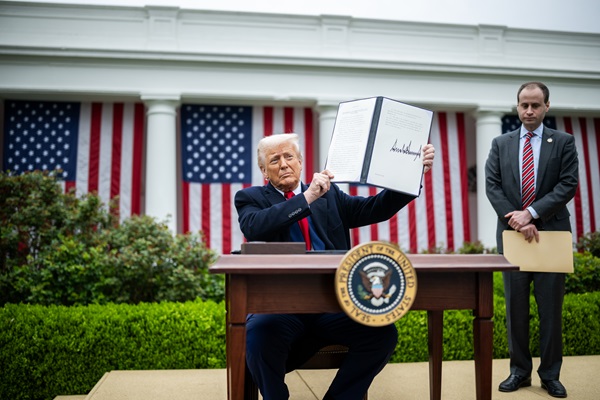.png)
May 12, 2025 at 2:55 PM IST
After two days of talks in Geneva, the US and China today announced a temporary trade truce. For 90 days starting May 14, both countries will sharply reduce tariffs on most goods. US tariffs on Chinese imports will drop from a staggering 145% to 30%, while China will cut its own duties on American products from 125% to 10%. Key sectors—steel, aluminum, and automobiles—are excluded, with 25% tariffs still in place for all US partners.
This deal, however, isn’t a fresh start—it’s a step back for the US, says Ajay Srivastava, founder of the Global Trade Research Initiative. US President Donald Trump, during his first term, began a tariff war with China in March 2018, promising to fix the trade deficit, bring back manufacturing, and slow China’s industrial rise. None of that happened. Instead, the tariffs hurt American businesses, pushed up prices for consumers, disrupted global supply chains, and widened the US trade deficit.
The same pattern has repeated this year, says Ajay Srivastava. Starting in January 2025, Trump hit Chinese goods with tariffs as high as 245%. Now, under economic pressure, he’s rolling them back.
What this new deal does achieve is reopening the $660 billion US–China trade pipeline and easing pressure on global supply chains. It lifts some of the most punishing tariffs and allows trade to flow more freely again.
And nothing else has changed, he says, adding that there is no plan to fix the core trade imbalance and no clear path to rebuild US manufacturing.
This is a short-term fix, not a long-term strategy.
India Impact
US tariffs on Indian goods remain at 10%—well below the 30% imposed under the 90-day truce on Chinese imports—but the massive tariff gap that once favoured India is shrinking fast.
Just months ago, the US duties of up to 145% on Chinese goods gave India a major edge in attracting companies looking to relocate. Now, that edge has narrowed dramatically.
This shift risks undermining the “China Plus One” strategy that saw firms move manufacturing to India, Vietnam, and Mexico, says the former Indian Trade Service officer.
He expects low-investment assembly operations to linger in India for now, but deeper manufacturing—the kind that builds real industrial ecosystems—may stall or even return to China. Investors are watching the US tilt, and many will hesitate to commit unless India can lock in a competitive advantage.
A smart trade deal with the US could help preserve India’s 10% tariff access and prevent any hike to the proposed 26% under Trump's new country-specific duties, he says.
Ajay Srivastava makes a case for India to urgently cut production costs, overhaul logistics, and improve regulatory predictability. As it negotiates future FTAs, India must also resist pressure to open up sensitive sectors such as automobiles and pharmaceuticals without meaningful reciprocal gains, he says.




